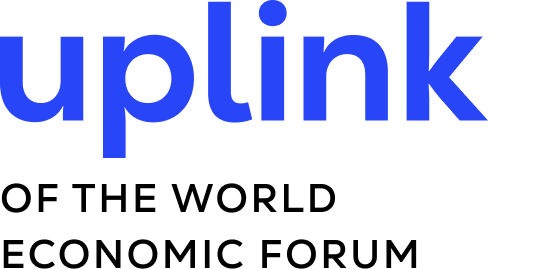A Sustainable Future - The SDGs Part 1 - Synergies
- charlottemac1
- Jun 4, 2021
- 3 min read
4th June 2021

The UN Sustainable Development Goals (SDGs) were formally implemented in 2015 by the UN to replace the Millennium Development Goals (MDGs) which were established in 2000 (UNDP 2021). The SDGs are ultimately a benchmark for global sustainability - financial, environmental, social and technical - which echoes the ethics and values of Wellers Impact, as well as our overall aim to drive a change for a better more sustainable world. These four aspects of sustainability are undoubtedly linked, as are the SDGs that represent them, albeit some SDGs are more strongly connected to each other than others.
Many of the SDGs are driven by time pressure - for example, the longer it takes to unify in our strategy for tackling the excessive reliance on single-use plastics, the more damage these plastics and microplastic components will cause, thereby taking us further and further away from the possibility of a sustainable world.
This begs the question - how should we use the SDGs to achieve the most widespread, positive impacts possible and where do we prioritise to achieve sustainability?
This question will be tested and answered across our three part segment. In contemplation of this, we will be considering:
The synergies of the SDGs (Part 1)
Changing behaviours domestically and regionally to the SDGs (Part 2)
The hierarchy of the SDGS (Part 3)

Synergies
The links of any one goal with other SDGs exists through the links within its sector, its targets and through policy and legislation (Breuer et al. 2019), therefore making the success of any one goal dependent on the success of the other related SDGs.
The concept of linkage between goals can provide a double-edged sword; whilst positive impacts can have positive, synergistic characteristics that provide benefits across sectors and across goals, the links between them can also give rise to opportunities for negative trade-offs.
For example, high contributions and advancements to SDG 8 - Decent Work and Economic Growth - may inadvertently cause harm to SDG 13 - Climate Action - if the progress made towards SDG 8 is not ecologically sustainable and causes large levels of pollution.
The first complete categorisation of potential trade-offs and synergies that the SDGs provide (Pradhan 2017) was created by ranking types of interactions between pairs of SDGs on national and global levels (Kroll et al. 2019). The resulting data highlighted that alleviation of poverty (SDG 1) imparted widespread, positive synergistic interactions with a majority of the other SDGs it was paired with, whilst Responsible Consumption and Production (SDG 12) gave the highest potential for negative trade-offs with its own pairings (Pradhan 2017).
These results may seem counterintuitive as reductions in poverty are often associated with an increase in jobs and production which can lead to environmental disruption, the potential for corruption, poor governance and the many other faults that could result from rapidly increasing commercial activity.
The logic behind this data shows that lower poverty levels will enable individuals to lead healthier lives with better medical support (SDG 3 - Good Health and Wellbeing) and economic growth (SDG 8 - Decent Work and Economic Growth) and permits implementation of sustainability through tax payments (SDG 17 Partnership For the Goals).
These positive impacts encourage public investment within a country’s infrastructure across sectors (SDG 9), which will in turn help to fund cross-sector services (multiple SDGs including but not limited to SDG 4 - Quality Education, SDG 6 Clean Water and Sanitation and SDG 7 - Affordable and Clean Energy) (Kroll et al 2019).
Ensuring synergies are maximised across sectors is key for policy makers, because trade-offs are predicted to significantly feature in a large proportion of inter-goal interactions up to 2030, the target date for achieving sustainability under the SDGs. Future actions towards reaching sustainability, whether through impact investment or policy and government action, must effectively assess the trade-offs; as well as the good that can be caused to prevent further damage.
Furthermore, synergies may help us understand if, for example, using capital to achieve sustainability for one goal has more value due to widespread positive impact than using the same amount of capital for another, less linked goal.
Wellers Impact is a UK-based, FCA-regulated Impact Investment Manager working to unlock community-focused impact through SDG-focused impact investing. Through innovative investment models that utilise fair economics, Wellers Impact originates investment opportunities across three core business activities; real estate developments in partnership with local land-owning not-for-profits in East Africa, financial support for agriculture firms and supply chains globally through sustainable development finance and direct investment into private water, sanitation and plastics recycling firms globally. Investment involves risk. Suitable for Sophisticated, Professional and High Net Worth Investors only.
Author: Charlotte Macdonald
References
Breuer, A., Janetschek, H. and Malerba, D., 2019. Translating Sustainable Development Goal (SDG) Interdependencies into Policy Advice. Sustainability, 11(7), p.2092.
Kroll, C., Warchold, A. and Pradhan, P., 2019. Sustainable Development Goals (SDGs): Are we successful in turning trade-offs into synergies?. Palgrave Communications, 5(1).
UNDP. 2021. Background of the Sustainable Development Goals | UNDP. [online] Available at: <https://www.undp.org/content/undp/en/home/sustainable-development-goals/background.html#:~:text=The%20objective%20was%20to%20produce,tackle%20the%20indignity%20of%20poverty.>.



Comments